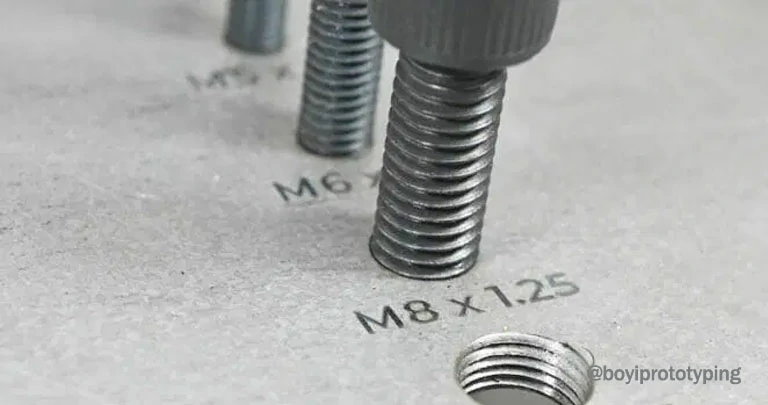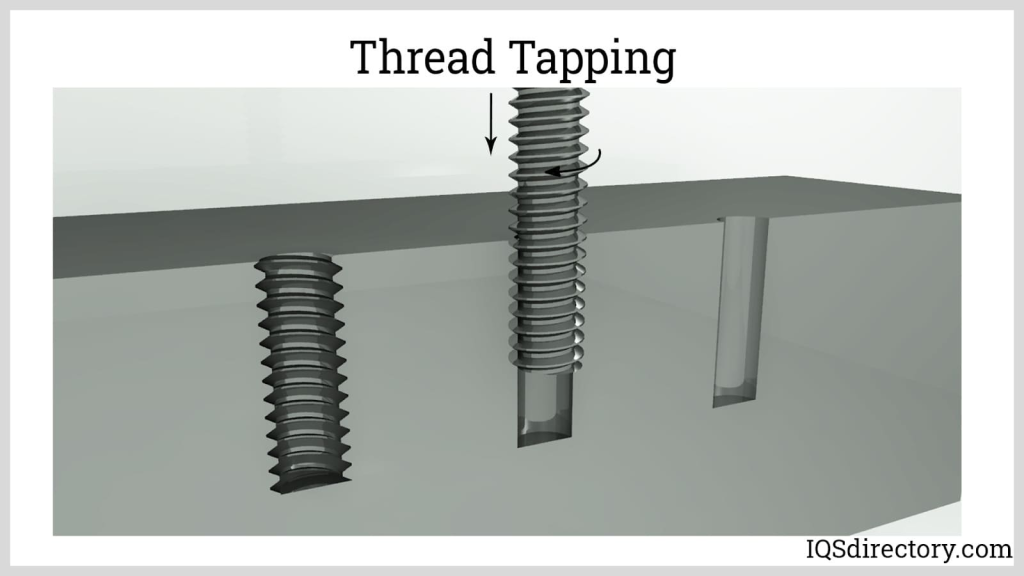A Beginner’s Guide to Tapped Holes in Metalworking
Metalworking is a complex and precise field that requires a great deal of skill and knowledge. One of the fundamental concepts in metalworking is the tapped hole, which is a hole that has been drilled and then threaded using a tap. In this article, we will provide a beginner’s guide to tapped holes in metalworking, covering the basics of what they are, how they are created, and their uses in metalworking.
What is a Tapped Hole?
A tapped hole is a hole that has been drilled into a metal workpiece and then threaded using a tap. The tap is a tool that cuts threads into the metal, creating a hole that can be used to attach other parts or components. Tapped holes are commonly used in metalworking to create joints, attach hardware, and provide a means of securing parts together.

How are Tapped Holes Created?
Tapped holes are created using a drill press or a hand drill to drill a hole into the metal workpiece. Once the hole is drilled, a tap is used to cut threads into the metal. The tap is typically made of a hard, wear-resistant material such as high-speed steel or carbide, and is designed to withstand the rigors of cutting threads into metal. The tap is inserted into the hole and turned, cutting threads into the metal as it is rotated.
Uses of Tapped Holes in Metalworking
Tapped holes are used in a wide range of metalworking applications, including the creation of joints, attachment of hardware, and securing of parts together. They are commonly used in industries such as aerospace, automotive, and construction, where precision and reliability are critical. Tapped holes can be used to attach parts such as screws, bolts, and studs, and can be used to create complex assemblies and mechanisms.
Types of Tapped Holes
There are several types of threaded hole, including through holes, blind holes, and bottoming holes. Through holes are holes that are drilled all the way through a workpiece, while blind holes are holes that are drilled only part of the way through. Bottoming holes are holes that are drilled to a specific depth and then tapped to create a threaded hole.
Common Metals Used for Tapped Holes
Tapped holes can be created in a wide range of metals, including aluminum, steel, and titanium. The type of metal used will depend on the specific application and the required strength and durability of the tapped hole. Aluminum is a popular choice for tapped holes due to its lightweight and corrosion-resistant properties, while steel is often used for its strength and durability.

Tips for Creating Tapped Holes
Creating tapped holes requires a great deal of precision and attention to detail. To ensure accurate and reliable results, it is essential to use the correct tap and drill bit for the job, and to carefully align the tap and drill bit with the workpiece. It is also important to use the correct cutting fluid and to maintain a consistent cutting speed and pressure.
Conclusion
In conclusion, tapped holes are a fundamental concept in metalworking, and are used in a wide range of applications to create joints, attach hardware, and secure parts together. By understanding the basics of tapped holes, including how they are created and their uses in metalworking, beginners can gain a solid foundation in this complex and precise field. With practice and experience, metalworkers can master the art of creating tapped holes and produce high-quality parts and assemblies.








